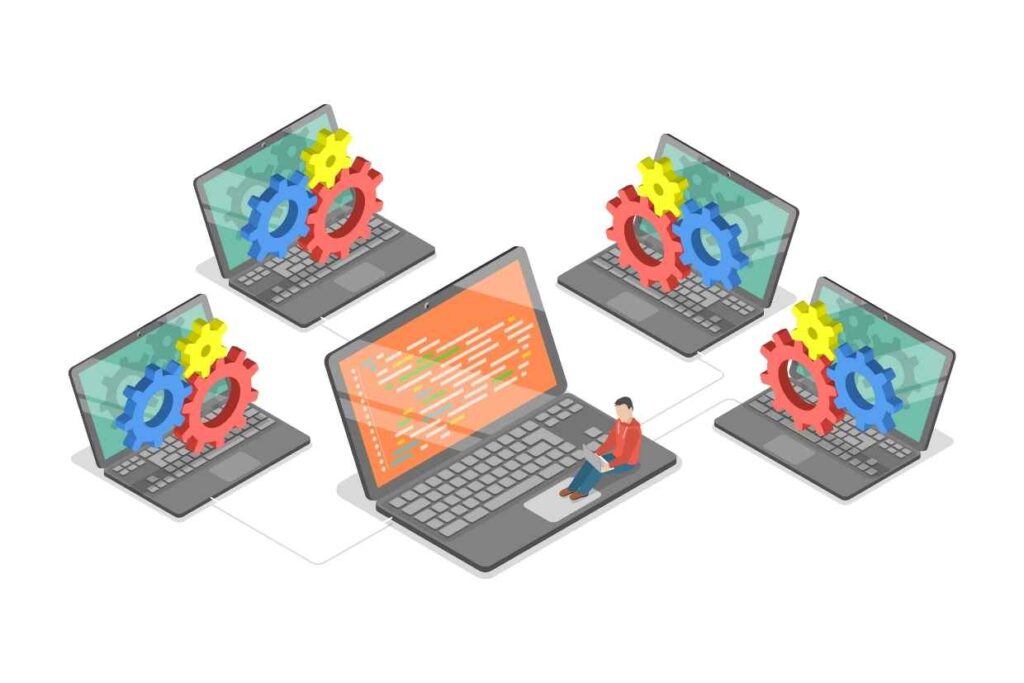Why do you need reliable data monitoring tools?

As technology continues to advance at a breakneck pace, companies are accumulating more data than ever before. We’re talking massive stockpiles of data flooding into organizations daily – so much that merely sorting through it all seems an impossible feat. Just imagine an endless parade of Excel spreadsheets marching through your office, papers flying everywhere until you can’t see your desk. Overwhelming, isn’t it?
Yet data is only useful if you can understand and act upon it. All those endless rows and columns are meaningless without proper data monitoring tools to analyze and interpret them. Simply letting piles of data accumulate is like having a team of world-class chefs prepare a 10-course gourmet meal and then tossing it straight into the garbage. What a tragic waste!
Proper data monitoring tools help you transform chaotic masses of data into valuable, actionable insights to guide critical business decisions. However, not all tools are created equal. Like kitchen utensils, you want reliable data monitoring tools crafted from high-grade materials, not flimsy plastic ones that snap under pressure. Bargain-basement tools may save you some dough upfront, but you’ll end up paying for it later when they fail at inopportune times.
So why do you need sturdy, dependable data monitoring tools? Read on as we explore some critical reasons to invest in reliable tools for overseeing your data.
DATA MONITORING TOOLS DETECT CRITICAL ISSUES EARLY

Would you rather find out there’s a deadly carbon monoxide leak in your home when levels reach dangerous concentrations or be alerted soon after a small leak begins? That early warning could save your family’s lives – reliable data monitoring tools function similarly for your business.
Superior data monitoring tools feature customizable alerts and thresholds across all critical business metrics so you can detect slight changes or anomalies early. Say website conversion rates suddenly decline by 2% – a reliable tool would notify you quickly so you can address the drop before losing significant revenue. But clunky tools with inadequate alerting fail to inform you until significant business harm occurs.
Closely tracking key performance indicators (KPIs) like web traffic, sales, operational efficiency, and more quality data monitoring tools act as an “early warning system” for potential issues. Think of them like a reliable home security system vigilantly monitoring your business around the clock. The moment something seems amiss based on your configured thresholds, these data monitoring tools will promptly alert you so problems can be tackled at their source.
DATA MONITORING TOOLS DETECT CRITICAL ISSUES EARLY

Receiving a prompt alert about declining website conversions is helpful, but understanding the underlying cause is more valuable. Like skilled detectives, advanced data monitoring tools help you swiftly pinpoint root causes so issues can be fixed appropriately without making them worse.
Say customers are suddenly abandoning online purchases at a 25% higher rate month-over-month. Quality data monitoring tools would allow you to drill down into micro-level data points across that customer journey, exposing precisely where things went wrong. Perhaps page load speeds slowed, an extra form field was added, or a bug emerged in the checkout process. Without granular insight, you’d struggle to diagnose the mystery behind this issue.
Sophisticated filtering, segmentation, and correlation features help spotlight root causes hidden deep in massive data sets. It’s like having a full-time professional data scientist on staff running models and analyses for you. Leveraging these capabilities, teams can isolate causal factors behind business issues, trace how they impact other metrics downstream and recommend targeted solutions.
MONITORING ALL DATA IN ONE CENTRALIZED PLATFORM

Organizations today use many different business systems and tools – CRMs, website analytics, marketing platforms, support portals, etc.- that house critical performance data. However, excessive tool sprawl causes major visibility problems. Data becomes fragmented across disconnected silos, making it near impossible to monitor effectively.
Say you’re assessing monthly revenue and notice an unexpected decline. Website analytics show web traffic and conversions are holding steady, so what happened? The issue lies with your billing system, where a technical glitch caused invoices to fail. But you’d never uncover that root cause in a reasonable timeframe, jumping between 20 different dashboards unless you use reliable data monitoring tools.
Robust data monitoring platforms tackle tool chaos by consolidating all essential data feeds into a unified environment. Customer sales data, web analytics, application performance, operational metrics, and more are all streamed into one centralized command centre. This “single pane of glass” grants more comprehensive visibility while drill-down functionality pinpoints underlying drivers regardless of system origin.
It’s incredibly powerful to observe relationships and correlations across all business data in context. Having a comprehensive lens into the whole picture, not just fragmented pieces. It enables more informed decisions backed by real-time insights. Plus, centralized platforms better secure data while granting controlled access to authorized users through built-in permissions.
THE RISKS OF DIY DATA MONITORING

Many organizations, especially smaller ones, try cobbling together their own makeshift data monitoring processes using spreadsheet trackers, dashboard screenshots and manual analysis. However, these DIY approaches have significant downsides that can degrade effective monitoring.
For example, spreadsheets and screenshots quickly become outdated. Undermining data-driven decision-making with stale, inaccurate insights and consolidating data from multiple sources into handmade analysis is a time-intensive busywork. Wasting these resources is better applied elsewhere. Not to mention, makeshift tracking leaves you flying blind once something breaks, or the diligent employee managing it all goes on vacation.
Proper data monitoring tools alleviate these headaches through automated data pipelines that feed reliable analytics. But more importantly, commercial tools incorporate best practices perfected over years of working with thousands of organizations in every industry. The learnings accrued through such broad experience provide template dashboards, alerts, reports and more tailored to different business needs out of the box.
Essentially, you gain decades of monitoring expertise in a ready-to-use package without building such capabilities in-house. Those data monitoring tools don’t need reinventing to simply leverage the industry-leading practices and improve upon them over time as your needs evolve.
CUSTOM REPORTING FOR UNIQUE INSIGHTS

As the saying goes, “One size rarely fits all.” The same concept applies to data monitoring, where relying solely on predefined reports and dashboards often fails to meet an organization’s unique reporting needs. Maybe you want to combine metrics from two departments into one consolidated view, which is unavailable in platform defaults, or compare regional performance trends in a specific way meaningful for strategic priorities.
Here’s where custom reporting capabilities become invaluable by providing business teams the autonomy to create the custom views they need on-demand. Best-in-class data monitoring tools allow non-technical users to freely build, save, and share custom reports, blending data however they choose without involving IT or developers.
Empowered custom reporting unlocks more meaningful insights as teams mould tool output data matching their objectives. Also, fostering self-service removes friction, enabling faster decisions so users don’t have to idle waiting on technical resources when they can quickly build custom views themselves.
THE RISKS OF DATA OVERLOAD

As more tools and systems pump endless streams of data into centralized monitoring platforms, businesses risk hitting overload. Too many metrics, dimensions, and data sources create analysis paralysis, where teams struggle to draw actionable needles from massive haystacks.
Quality data monitoring tools counter the overload with intelligent dashboards highlighting only the most critical metrics needing attention. Advanced analytics combines related data points into digestible composite scores tied to business priorities. AI-driven anomalies reveal unexpected changes without requiring going through metrics by hand.
Such efficiencies help focus visibility on what matters most. However, achieving balance is an iterative process as needs shift. Continually re-evaluate the metrics shown, combine irrelevant views and automate repetitive analysis for sustained relevance and optimizing attention.
SECURING SENSITIVE INFORMATION

Security can’t be an afterthought with so much valuable data concentrated in centralized monitoring systems. However, organizations often overlook properly safeguarding these mission-critical analytic engines. Beyond external threats, insider risks like unauthorized data access or leakage must also be addressed.
Reliable data monitoring tools provide layered security protections spanning network, platform and data access levels. Advanced user access controls grant data access on a need-to-know basis only. Real-time monitoring detects suspicious user behaviours indicative of internal misuse. Also, data encryption protects sensitive information throughout the entire system.
Regularly reviewing security postures, performing audits, assessing controls against the latest best practices, and updating platforms ensure the continual enhancements sustaining reliable protection of consolidated data.
BETTER DECISIONS DRIVE BETTER OUTCOMES

At the end of the day, reliably monitoring and interpreting all your data leads to smarter choices that improve results. When you detect critical changes the moment they start, swiftly diagnose the root causes, and observe the system’s broad data that impacts your actions, you become precise and decisive. It’s no longer guesswork; informed data analysis tells you what needs fixing and why it needs fixing.
Superior data monitoring tools crucially empower data-driven decision-making that guides better business outcomes. At the same time, subpar tools fail you when it matters most. Just imagine your frustration when critical performance alerts fail to notify you, granular analysis leaves root causes unclear, and fragmented data inhibits a comprehensive perspective. Talk about infuriating!
Yet those regrettable scenarios are avoidable when you choose reliable, enterprise-grade data monitoring tools to serve as the backbone of organizational intelligence functions. Purpose-built to deliver actionable insights through advanced analytics, configurable alerts, and centralized visibility; these tools fully unlock the value of data to drive growth.
So why waste precious time and resources speculating what to do next or making gut-feel judgment calls? Stop guessing and start seeing the whole picture with reliable data monitoring tools; no ambitious business should operate without them. Just don’t blame me when spot-on data insights reveal that questionable new project to be an utterly terrible idea! Hey, can’t argue with the data now, can we?

